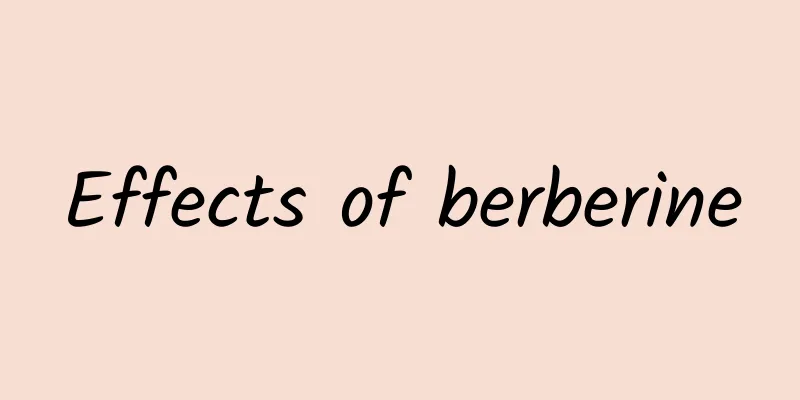The efficacy and function of blowing vine

|
Blowing vine is a common Chinese medicinal material, which has great health-care effects and is also effective for some diseases. We need to choose it according to our needs. Many people in life don’t know much about blowing vine, so let’s analyze it below. [Alias] Glehnia littoralis, Double Flying Butterfly, Milk Vine. [Source] Medicinal material source: the roots and stems of the small-fruited micro-flowered vine of the Cornaceae family. [Original form] A woody vine with small fruits and tiny flowers. The twigs are flattened and covered with light yellow stiff hairs, with tendrils growing in the axils or on one side of the petiole. Leaves nearly opposite; petiole 1-3cm long, with light yellow stiff prostrate hairs; leaf blade thin papery, oblong to ovate, 6-17cm long, 3-11cm wide, apex long acuminate sometimes acute, base rounded or slightly cordate, with stiff prostrate hairs along veins above, densely with fine granular protrusions, densely covered with white or light yellow coarse stiff prostrate hairs and a few straight soft hairs below; lateral veins 4-6 pairs. Flowers are dioecious, with axillary umbels and densely rusty hairs; male inflorescences are 8-20cm long, and male flowers are yellow-green; serpiae are 5, lanceolate, united near the base, and covered with rusty hairs; petals are 5, united below the middle, with a small pointed tip, and covered with yellow-brown hairs; stamens are 5, and filaments are extremely short; ovary is rudimentary and covered with long, spiny hairs; female inflorescences are shorter, and female flowers are green; sepals are 5, covered with rusty hairs; petals are 5 (-6), covered with yellow-brown hairs; no degenerate stamens; ovary is ovoid-spherical, densely covered with yellow spiny hairs, and the stigma is nearly disc-shaped and 3-lobed. The drupe is ovate or broadly ovate, 1.3-2.2cm long, red when ripe, slightly flattened when dry, with polygonal pits, densely covered with yellow hairs, and with persistent enlarged petals and calyx. The flowering period is from December to June of the following year, and the fruiting period is from May to August. [Habitat distribution] Ecological environment: Growing in valley seasonal rain forest to shrubland at an altitude of 120-1300m. 【Nature and flavor】 Spicy; slightly warm 【Functions and indications】 Dispel wind and cold; remove dampness and dredge meridians. Treats wind-cold-dampness arthralgia; nephritis; fatigue [Usage and Dosage] For oral use: decocted in water, 9-15g. 【Excerpt】 Chinese Materia Medica The above content is an introduction to the Chinese medicinal herb Aconitum. I hope it can be of some help to everyone. There are many medicinal herbs similar to the genus Trichosanthes in our daily life. When we consume Chinese medicines such as blowing vine, we need to follow the doctor's instructions and not consume them blindly. |
<<: The efficacy and function of wind wheel vegetable
>>: The efficacy and function of weeping begonia
Recommend
Buckwheat straw benefits and effects
Buckwheat straw is a traditional Chinese medicina...
How to save your fragile stomach after a big meal? 11 probiotics reviews
After eating and drinking a lot throughout the Sp...
The efficacy and effects of eating pearl powder
There is an animal called clam, which mainly live...
What are the effects and functions of stinky wormwood?
Mugwort is a very common plant in normal times. M...
Unique in China! Swallowtail butterfly that looks like a "big-eyed alien" when young, first appeared in Jiangxi!
In the colorful world of butterflies, there is a ...
The natural "carpet" of the Qinghai-Tibet Plateau has been renewed! Scientists have discovered 11 new species of lichens
The Qinghai-Tibet Plateau has an average altitude...
Why are women shorter than men on average?
I guess everyone has noticed that regardless of e...
The difference between peony flowers and chrysanthemum flowers
Peony and peonies are indispensable in many ancie...
What does the “Deep Space Gateway” look like, where does this “portal” lead to, and what significance does it have for humanity?
Many friends may use their imagination to tune in...
Effects and functions of white peony root
When using some special medicines, everyone will ...
What are the effects of Chinese medicine salt Eucommia
Friends who are familiar with traditional Chinese...
How long should you boil Imperata root in water?
Boiling water with Imperata root is a very good m...
The effects and functions of bitterwood root
As for bitterwood root, I think some people may h...









